Breaking down Liam Coen's comments on Analytics vs. Instinct, Chris Rodriguez

Kentucky offensive coordinator Liam Coen was behind the podium on Tuesday following the Cats’ fourth spring-time practice. The new play-caller discussed several aspects of his unit to include quarterback cadence, the huddle, the center position post Drake Jackson, Chris Rodriguez Jr., and more. One specific comment that Coen brought up ruffled some feathers. When asked about what stats he values, the coordinator made a “stats are for losers” comment which references Los Angeles Rams head coach Sean McVay. Relax. I’ll try to explain.
I went back and rewatched Coen’s statements many times. The McVay position regarding stats appeared to be based on a player or coach reading a stat sheet following a game. Context. Mark Stoops’ new offensive coordinator wasn’t discarding or downplaying the new trend of analytics. In my opinion, he was referring to individual statistics. Most coaches and programs utilize all available resources in order to win football games. UK is no different. There are measures that Coen will reference during spring practice and the season including efficiency in the run game and computing explosive passing plays. Like he said, everything is charted. Lessons will be learned and changes will be made based on data or analytics.
I’ve found the “Analytics vs. Instincts” argument to be as divisive as politics. Both sides are unyielding regarding the best manner to call plays and make critical in-game decisions. Neither will budge off their stance and that’s ok. Offensive coordinators are more than computers or robots. So are head coaches. There is a human element that must be factored in that can’t be found on a spreadsheet or produced by an algorithm.
For example, the old school sideline telephone is used for quarterback-coordinator discussions and is just as important as the laptops that spit out numbers. Human interaction can’t be discounted or undervalued. Effective offensive coordinators trust their quarterbacks and heavily rely on information that the signal caller relays to the press box. A spreadsheet cannot read the eyes of an outside linebacker which can be a tendency prior to a blitz. That type of information can be conveyed by the quarterback or an offensive player to the coordinator. Offensive players can pick up on defensive calls by listening to defenders make verbal adjustments prior to a certain concept being executed on the field. That information is communicated to the coordinator as well. Senses matter. Sights and sounds count. Intuition must be factored.
A laptop can’t feel the game’s momentum which can only be sensed or felt by being on the playing field. A formula may call for a play action pass on 3rd and 2 inside the opponent’s 30 yard-line. But, common sense says give Rodriguez the football and run behind Luke Fortner and Darian Kinnard. An analytical card may indicate that a head coach should kick a PAT in the game’s final minutes instead of going for the two-point conversion and the win. But, what if the coach sees the opposing defense’s hands on their hips which indicates fatigue following a long scoring drive? What about wind or elements? Go for two. Go for the win. The point I’m trying to make is that there is a human element in coaching that can only be experienced from the field level.
Some offensive coordinators script the game’s first ten or fifteen plays based off advanced analytics and then make adjustments based on looks vs. certain formations, down and distances, and or personnel groups. I like that concept. I actually was involved in a coordinator change and executed a scripted game plan which I found refreshing. It provided a safety blanket for the quarterbacks. Familiarity brings on consistency. Consistency equals production. Production produces momentum. Football is a game of momentum.
I’m an old school guy because I’m old. I think we’ve established that throughout the years. However, I am a stat guy and respect the benefits of modern-day analytics. Deep-dive stats or advanced analytics is a little much for me. Not that I don’t value its benefits. I do. I don’t take sides in the “Analytics vs. Instincts” argument. It’s the sign of the times and marks the evolution of football. Coordinators and head coaches must adapt to analytics or be passed by. But, it’s just too much information for me to process into information used in my writing. I’ll stick to basic numbers. That’s my style but others like Adam Luckett do a great job in expanding on deeper numbers and explaining analytical benefits. Luckett is a tremendous pickup for KSR and is a must follow on Twitter and this website. His advanced stats paint the picture for a deeper dive look into the “Why” and “How” of football.
I’m willing to accept that analytics is the new wave and should be taken seriously. I’m also experienced enough to realize that a gut-feeling based on player-coordinator communication, experience, and environment is at times the best manner to call a football play or make a vital, in-game decision. A balanced mixture of both analytics and instincts separate the good from the great play callers and head coaches.
Give 24 the Football
Jumping back to the analytics vs. common sense squabble. It doesn’t take a high-speed computer to make me understand that the Wildcats will focus on getting the football into the hands of Chris Rodriguez Jr. in 2021. The All American’s involvement in the new scheme may take on a different look. Coen said, “Chris Rodriguez needs to touch the ball as many times as possible. We want to try to get Chris over 25 touches a game.” The bruising running back will get traditional carries but it appears that he’ll also be more involved in the passing game. Rodriguez Jr. is a special talent that averaged just 13.3 touches per game in 2020. Not enough. Of those, 119 were carries compared to just one reception. Those stat-lines should look quite a bit different in 2021 which can only boost the UK RB’s draft stock.
Personnel, Plays, Cadence
Coen – “Personnel is a weapon. Plays is a weapon. Cadence is a weapon.”
See above statement about me being old and old school. I hate the hand-clapping cadence fad. Drives me nuts. The ole fake hand clap is the modern day hard count. It just looks goofy in my opinion. But, the hand-clap is commonly used in modern day football. Coen sees voice cadence as a weapon that can be utilized to steal hidden yards. Thank goodness. Commonly used in the NFL, verbalized hard-counts can lead to defensive penalties. Stealing five free yards on a regular basis can be considered as a competitive advantage and somewhat of a lost art.
Top 10
- 1New
Boise State AD
Rips CFP changes
- 2
OU athletic staff lay-offs
Revenue sharing the root
- 3Trending
Jordon Hudson
Calls out Belichick reporting
- 4Hot
Top 25 coaches
Ranking top HCs in CFB
- 5
USC Booster
Threatens Trojans over Notre Dame
Get the On3 Top 10 to your inbox every morning
By clicking "Subscribe to Newsletter", I agree to On3's Privacy Notice, Terms, and use of my personal information described therein.
Personnel groupings refer to individual players within a formation. For example, 12 Personnel denotes one running back and two tight ends. 11 Personnel is one running back, one tight end. If Coen’s system is similar to that ran by the Rams, personnel groupings will vary from play to play. This will mandate on-going adjustments by opposing defenses.
System install is going smoothly based on all accounts coming from the Joe Craft Football Training Center. Cadence, personnel, and plays are all new. The Cats should be familiar enough with the new offense to become varied by the end of spring practice. Repetition, repetition, repetition.
A New Center
All-SEC center Jon Toth started 48 consecutive games for the Wildcats. He was followed by All American Drake Jackson who started 43 straight contests. The center position has been one of elite production, cerebral leadership, and consistency over the years. Kentucky must identify the next quarterback of the Big Blue Wall and it appears that the position is up for competition. Quintin Wilson was initially penciled in as the likely successor to Drake Jackson. Coen indicated on Tuesday that Luke Fortner and Eli Cox are also rotating in at the middle of the offensive line. Coen’s system calls for the center to make calls in both the run and pass game. While Wilson was the pre-camp favorite, Fortner can also be utilized at the position with the intent to put the best five offensive linemen on the field at the same time.
What Does All This Mean?
Not a lot to be quite honest. It’s March. Kentucky has all of four practices under its belt in the spring session. Coen is knee deep in the offense’s installation phase. Chris Rodriguez Jr. is a Dude. The success of the 2021 season will hinge upon the All American’s ability to produce with the expectation of being the team’s feature running back. He’ll be more active in the pass game which can only boost his NFL stock. 25 touches is the target number of times that Coen wants to see the football in number 24’s hands. Smart move. Common sense move. Analytical move.
Keep your eyes on the center position. Fortner at that spot may not be a stretch. Much like the sixth-year senior, Quintin Wilson can also play multiple positions along the line of scrimmage and was a spot starter at guard a year ago. UK’s intent will be to put its best five offensive linemen on the field at the same time. What that looks like is yet to be determined.
Stay tuned for more football coverage on Kentucky Sports Radio to include practice updates as well as Pro Day on March 31st. Also, tune in for KSR football related podcasts which include the KSR Football Podcast, 11 Personnel, and the Depth Chart.


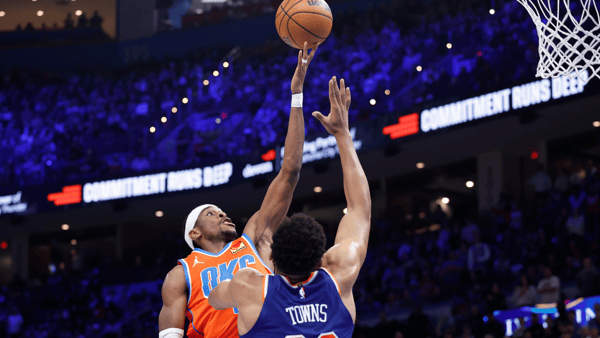

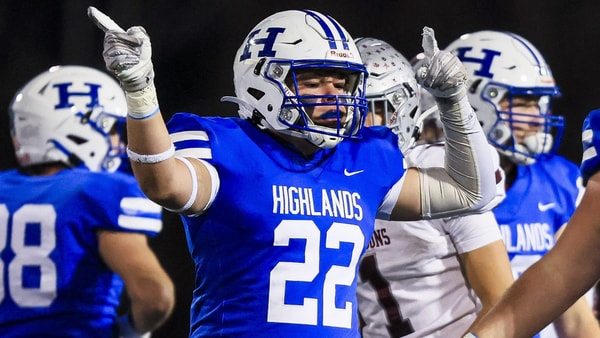
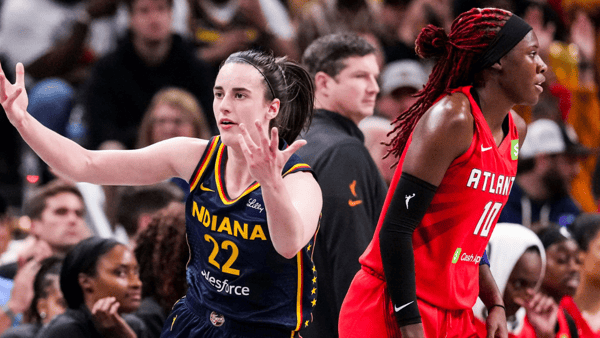
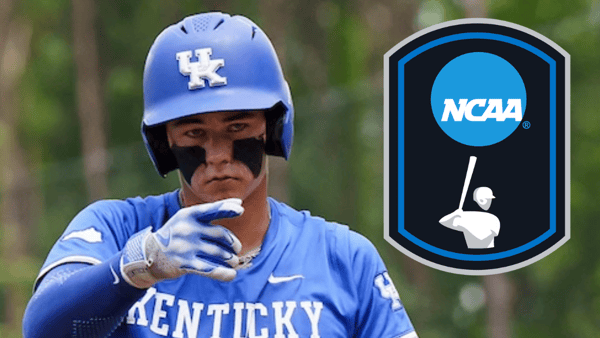
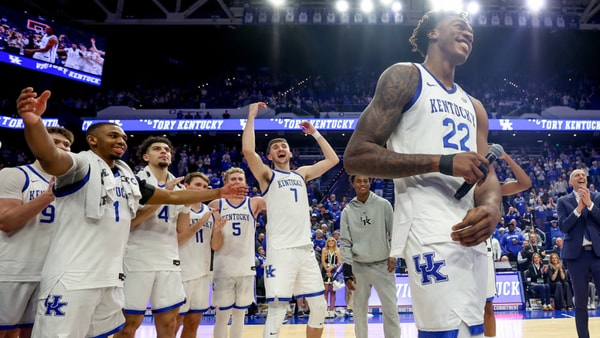
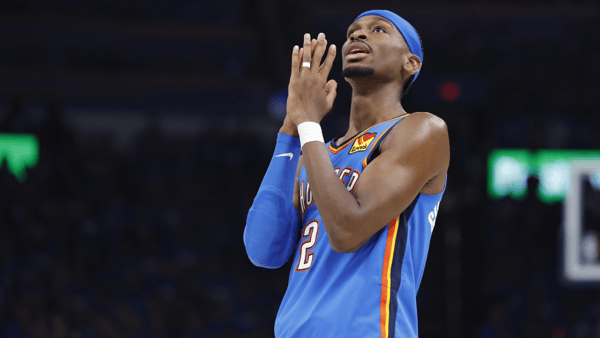
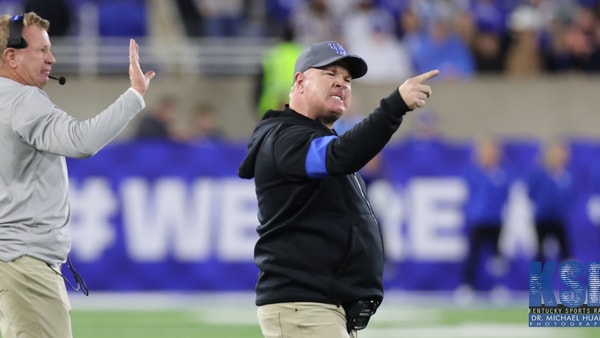
Discuss This Article
Comments have moved.
Join the conversation and talk about this article and all things Kentucky Sports in the new KSR Message Board.
KSBoard